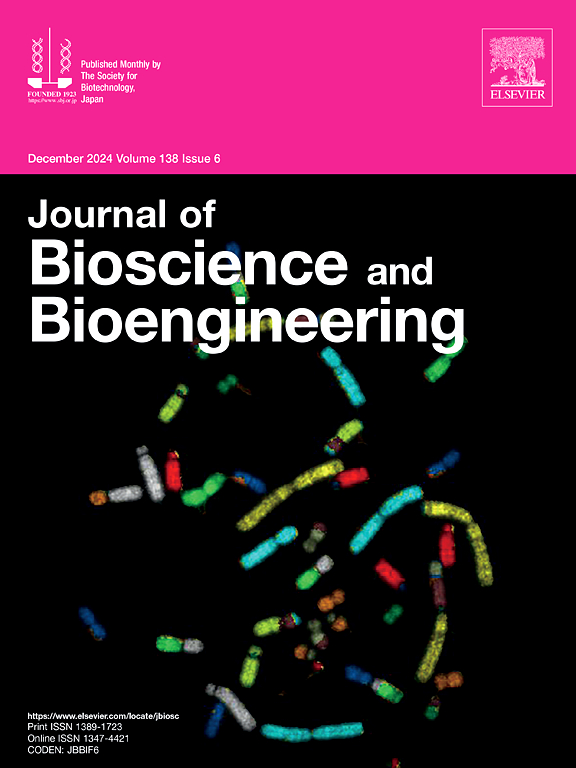New glycerol glycosides in sake formed by Aspergillus oryzae α-glucosidase A
IF 2.9
4区 生物学
Q3 BIOTECHNOLOGY & APPLIED MICROBIOLOGY
引用次数: 0
Abstract
Sake contains unique glycosides produced by the transglycosylation action of α-glucosidase from Aspergillus oryzae. Besides influencing the taste of sake, some transglycosylation products in sake exhibit beneficial biological activities. In this study, we searched for new transglycosylation products in sake. Liquid chromatography–mass spectrometry (LC–MS) revealed that peaks with m/z values corresponding to the glycosides, diglucopyranosylglycerol, triglucopyranosylglycerol, and tetraglucopyranosylglycerol, are present in sake. The presence of glycosides containing up to four polymerized glucose units is the first observation in sake. The peaks of the compounds were not observed in the sake that was brewed with a rice-koji made by α-glucosidase A (AgdA) gene disruption A. oryzae strain. The in vitro transglycosylation experiment using maltose, glycerol and a recombinant AgdA suggested that the compounds in sake were transglycosylation products composed of glycerol and one to four units of glucose. Nuclear magnetic resonance (NMR) analysis revealed that one of the major products of in vitro synthesis was α-isomaltosylglycerol (α-iMG). α-iMG was detected in commercial sake as a common component at an average of 1095 ppm (mg/L). This is the first study to report the presence of α-iMG in foods and beverages.
米曲霉α-葡萄糖苷酶A在清酒中形成的新甘油苷。
清酒中含有由米曲霉α-葡萄糖苷酶转糖基化作用产生的独特糖苷。除影响清酒口感外,清酒中的一些转糖基化产物还表现出有益的生物活性。在本研究中,我们在清酒中寻找新的转糖基化产物。液相色谱-质谱(LC-MS)分析表明,清酒中存在与糖苷、二葡核苷、三葡核苷和四葡核苷对应的m/z峰。糖苷的存在含有多达四个聚合葡萄糖单位是第一次观察到的清酒。用α-葡萄糖苷酶a (AgdA)基因破坏菌株制作的米曲酿造清酒时,没有观察到这些化合物的峰。用麦芽糖、甘油和重组AgdA进行的体外转糖基化实验表明,清酒中的化合物是由甘油和1 ~ 4单位葡萄糖组成的转糖基化产物。核磁共振(NMR)分析表明,体外合成的主要产物之一是α-异麦芽糖基甘油(α-iMG)。在商业清酒中,α-iMG作为常见成分被检测到,平均含量为1095 ppm (mg/L)。这是首次报道食品和饮料中存在α-iMG的研究。
本文章由计算机程序翻译,如有差异,请以英文原文为准。
求助全文
约1分钟内获得全文
求助全文
来源期刊

Journal of bioscience and bioengineering
生物-生物工程与应用微生物
CiteScore
5.90
自引率
3.60%
发文量
144
审稿时长
51 days
期刊介绍:
The Journal of Bioscience and Bioengineering is a research journal publishing original full-length research papers, reviews, and Letters to the Editor. The Journal is devoted to the advancement and dissemination of knowledge concerning fermentation technology, biochemical engineering, food technology and microbiology.
 求助内容:
求助内容: 应助结果提醒方式:
应助结果提醒方式:


